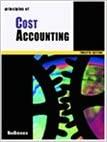Answered step by step
Verified Expert Solution
Question
1 Approved Answer
Question 6-9 Assume the company uses variable costing: Compute the unit product cost for Year 1 and Year 2. Prepare an income statement for Year

Question 6-9
- Assume the company uses variable costing:
- Compute the unit product cost for Year 1 and Year 2.
- Prepare an income statement for Year 1 and Year 2.
Step by Step Solution
There are 3 Steps involved in it
Step: 1

Get Instant Access to Expert-Tailored Solutions
See step-by-step solutions with expert insights and AI powered tools for academic success
Step: 2

Step: 3

Ace Your Homework with AI
Get the answers you need in no time with our AI-driven, step-by-step assistance
Get Started


